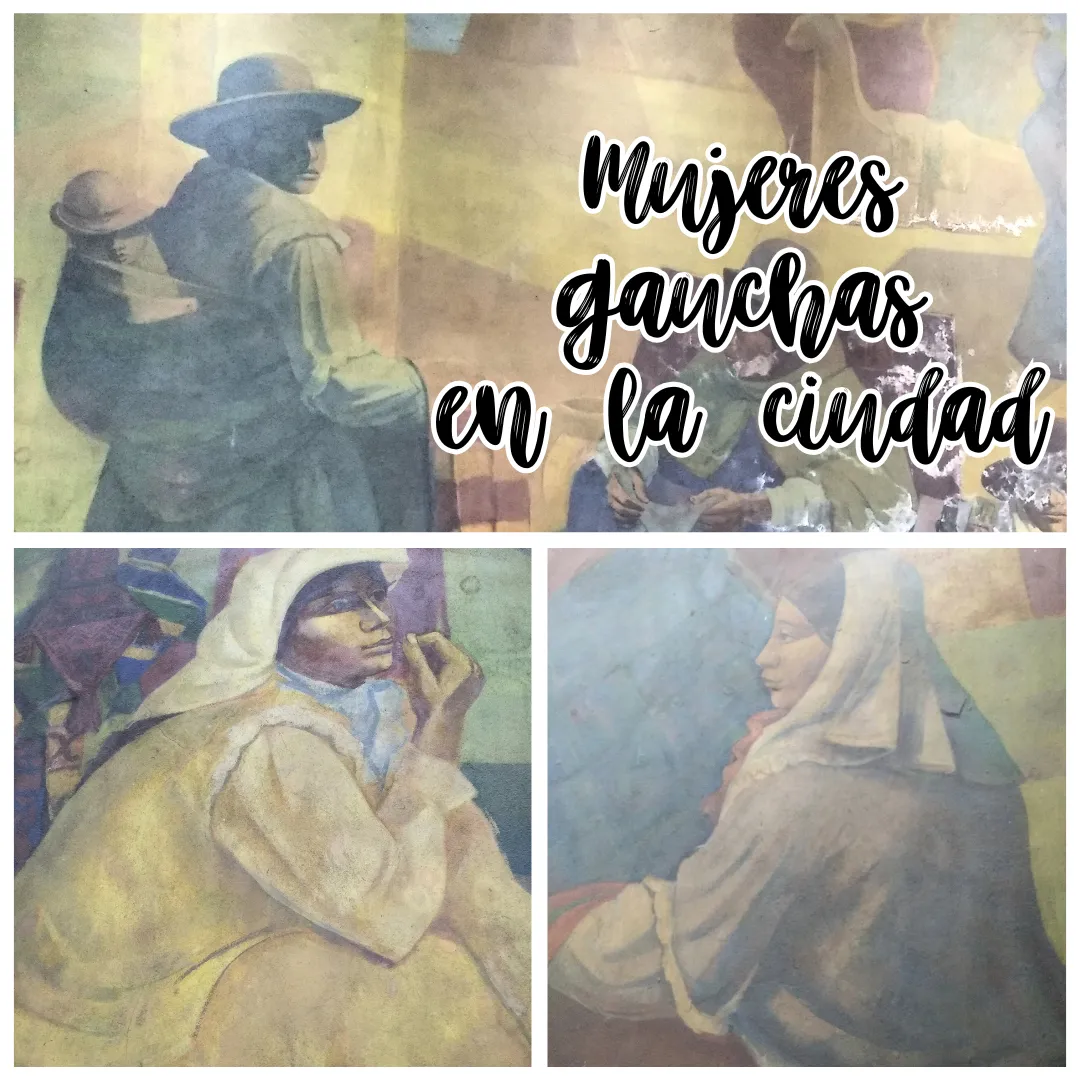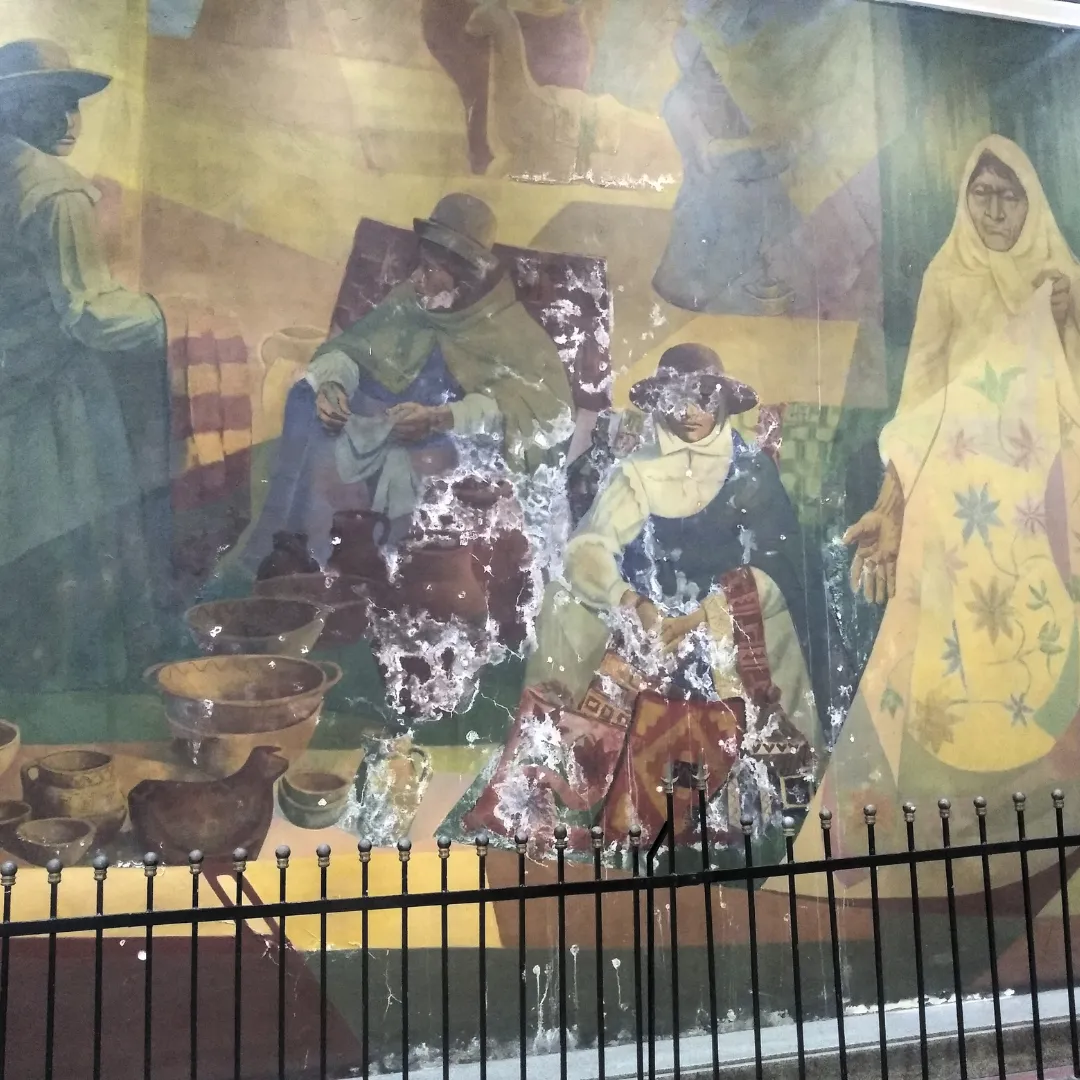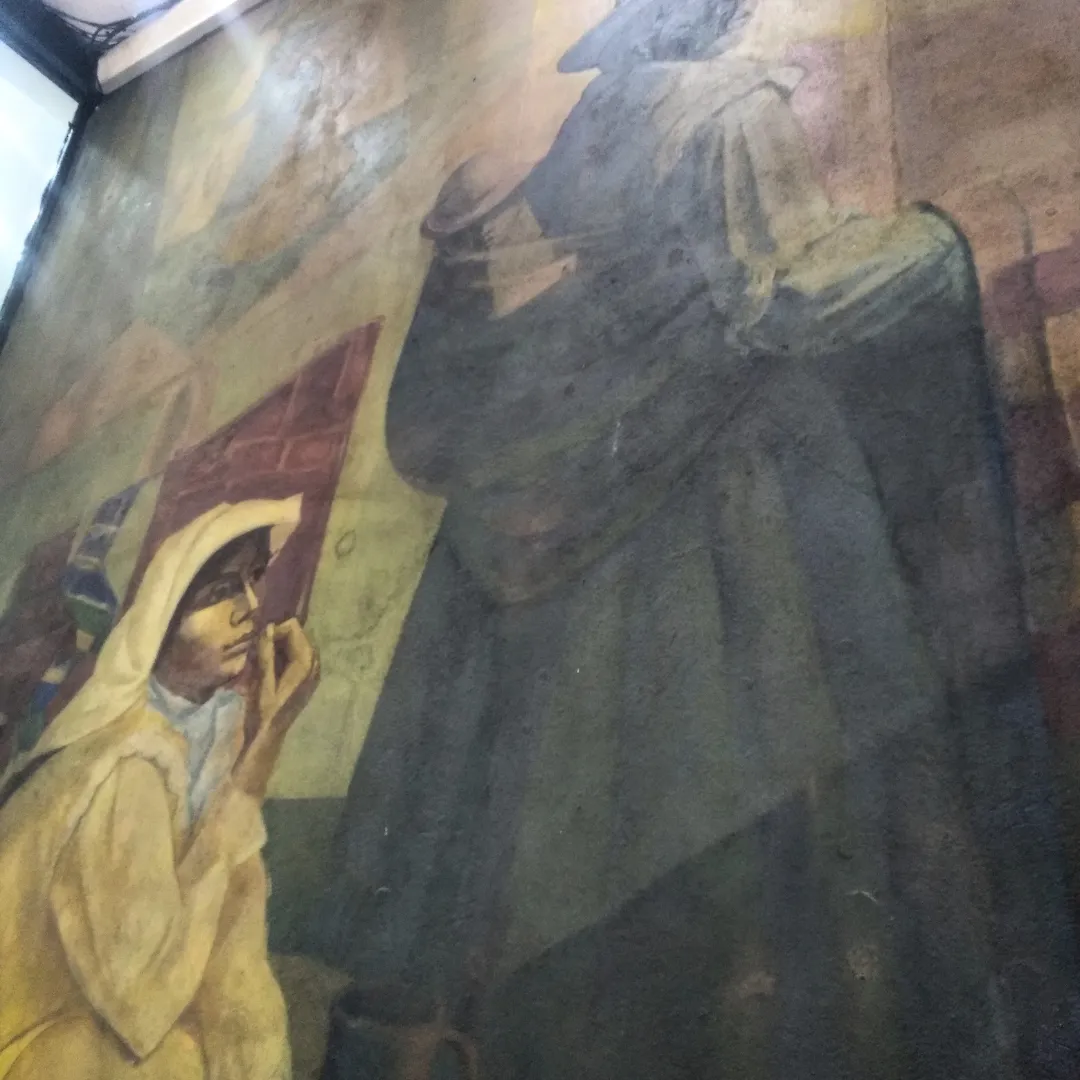
Para quienes no están familiarizados con el término, los gauchos son aquellas personas que se dedican a las labores del campo, los llamados campesinos en otras tierras, y si nos ponemos gringos, serían los cowboys.
Estas personas llenas de nobleza y la inocencia que trae consigo la ignorancia de muchos aspectos de la vida cosmopolita y los adelantos tecnológicos, llevan consigo toda esa cultura ancestral en la que prevalece la astucia ante las ventajas de tener las facilidades para poder subsanar necesidades y problemas.

Por eso, cuando paseaba por una de las tantas galerías del boulevard de Lanús, me sorprendió gratamente encontrar este hermoso mural que describe una escena de mujeres gauchas en algunas de sus costumbres, ya que por lo general siempre he visto manifestaciones similares pero de los hombres demostrando su agilidad con el ganado y otras actividades.

Aunque dice que ha sido restaurada (hace ya muchos años atrás), se nota que a pesar de tener cierta barrera para evitar el acceso de las personas que puedan dañarla, el paso del tiempo y las condiciones climáticas, ha afectado algunas zonas de esta enorme pintura.

Vemos a 5 mujeres reunidas en torno a labores domésticas: el cuidado de los hijos, con esa particular forma de llevarlos con ellas en un atado sobre la espalda, una práctica, que se ha perdido un poco en las sociedades actuales, aunque semeja a los fulares actuales, pero sin las consecuencias en la columna vertebral.

Sus trajes, nos dan una idea universal de su procedencia, ya que no estas características no son solo propias de Argentina, sino también de los pobladores de sus fronteras y quizás un poco más allá: Bolivia, Chile y hasta el sur de Brasil.

Quizás sea mi particular visión al momento de transitar por alguna parte, o el querer vivir de manera consciente y no dejándome llevar por la búsqueda exacerbada del dinero, la fama o algún sugar (jaja) que al momento de pasar frente a esta obra, me detuve a sacar mi teléfono para capturar las imágenes que comparto, mientras el resto de la gente pasaba a su lado sin siquiera notar su presencia.

De hecho, me causó gracia ver que muchos me veían a mi teléfono en mano, y volteaban a ver lo que estaba fotografiando, y luego volvían a verme con cara de extrañeza, casi preguntando el por qué lo estaba haciendo.

Para mi, esta expresión de una reunión de mujeres, pues nosotras hasta cierto punto necesitamos de ese soporte que solo te pueden dar otras que entienden las realidades que afrontamos, que aunque un artista, que no aparece reflejado en este mural, tomó como inspiración para su arte, vale muchísimo, aunque pasa desapercibido en una sociedad que va más pendientes de los horarios y las selfies.

For those who are not familiar with the term, gauchos are those people who work in the fields, the so-called peasants in other lands, and if we get gringo, they would be the cowboys.
These people full of nobility and the innocence that comes with ignorance of many aspects of cosmopolitan life and technological advances, carry with them all that ancestral culture in which cunning prevails in the face of the advantages of having the facilities to be able to meet needs and problems.

That is why, when I was walking along one of the many galleries of Lanús boulevard, I was pleasantly surprised to find this beautiful mural depicting a scene of gaucho women in some of their customs, since I have usually always seen similar manifestations but of men demonstrating their agility with cattle and other activities.

Although it says that it has been restored (many years ago), it is noticeable that in spite of having a certain barrier to avoid the access of people who could damage it, the passage of time and the climatic conditions have affected some areas of this enormous painting.

We see 5 women gathered around housework: the care of children, with that particular way of carrying them with them in a tied on the back, a practice, which has been lost a little in today's societies, although it resembles the current foulards, but without the consequences on the spine.

Their costumes give us a universal idea of their origin, since these characteristics are not only typical of Argentina, but also of the inhabitants of its borders and perhaps a little further: Bolivia, Chile and even the south of Brazil.

Maybe it is my particular vision at the moment of passing somewhere, or the fact that I want to live consciously and not letting myself be carried away by the exacerbated search for money, fame or some sugar (haha) that at the moment of passing in front of this work, I stopped to take out my phone to capture the images that I share, while the rest of the people passed by without even noticing its presence.

In fact, I was amused to see that many people saw me with my phone in hand, and turned to see what I was photographing, and then turned to look at me with a puzzled face, almost asking why I was doing it.

For me, this expression of a meeting of women, because to a certain extent we need that support that only others who understand the realities we face can give you, that although an artist, who is not reflected in this mural, took as inspiration for his art, it is worth a lot, although it goes unnoticed in a society that is more concerned with schedules and selfies.
Foto/Photo by: @mamaemigrante. Créditos al artista y al restaurador de la obra.
Edición/Edited by @mamaemigrante using canva
Translated and formatted with Deepl